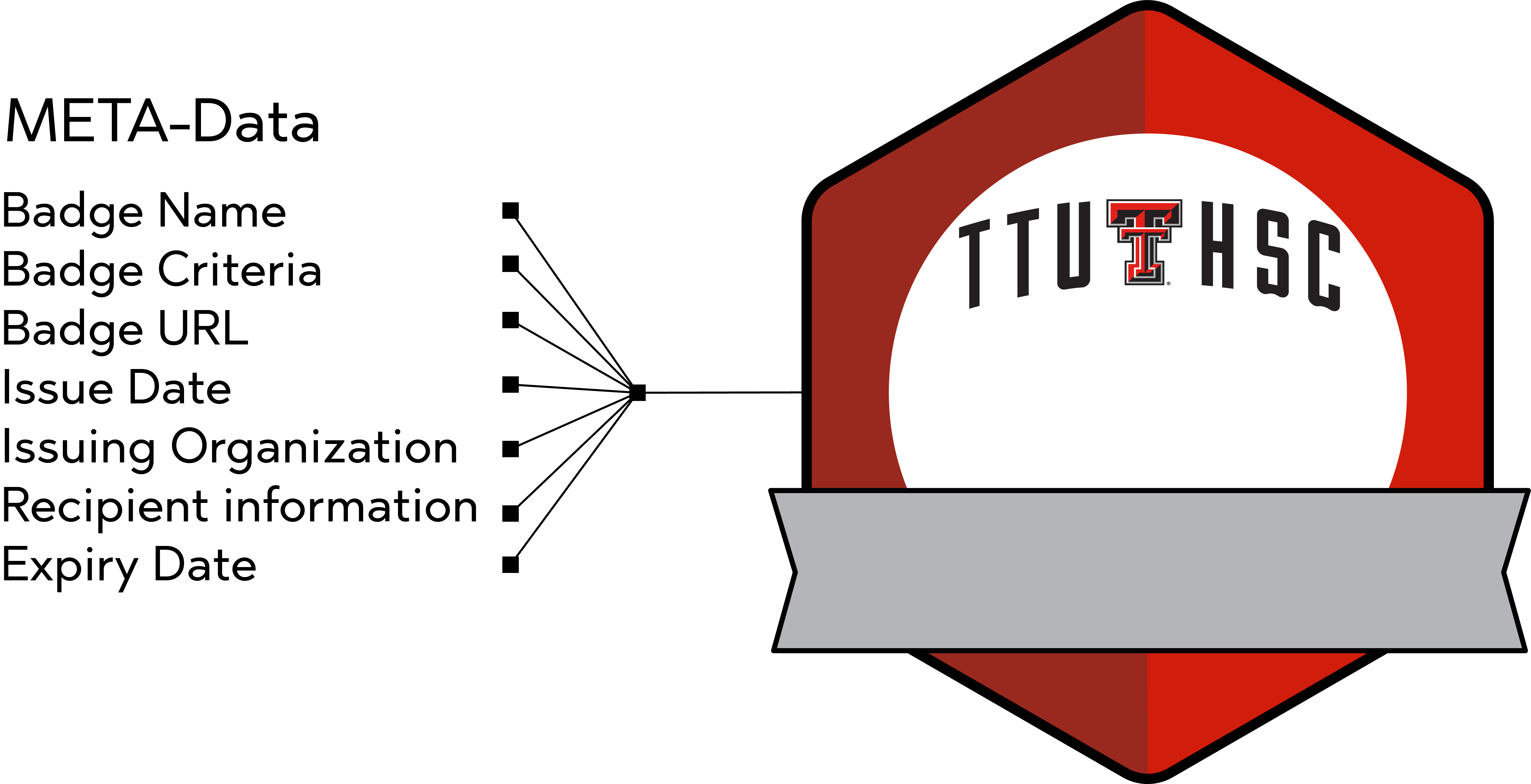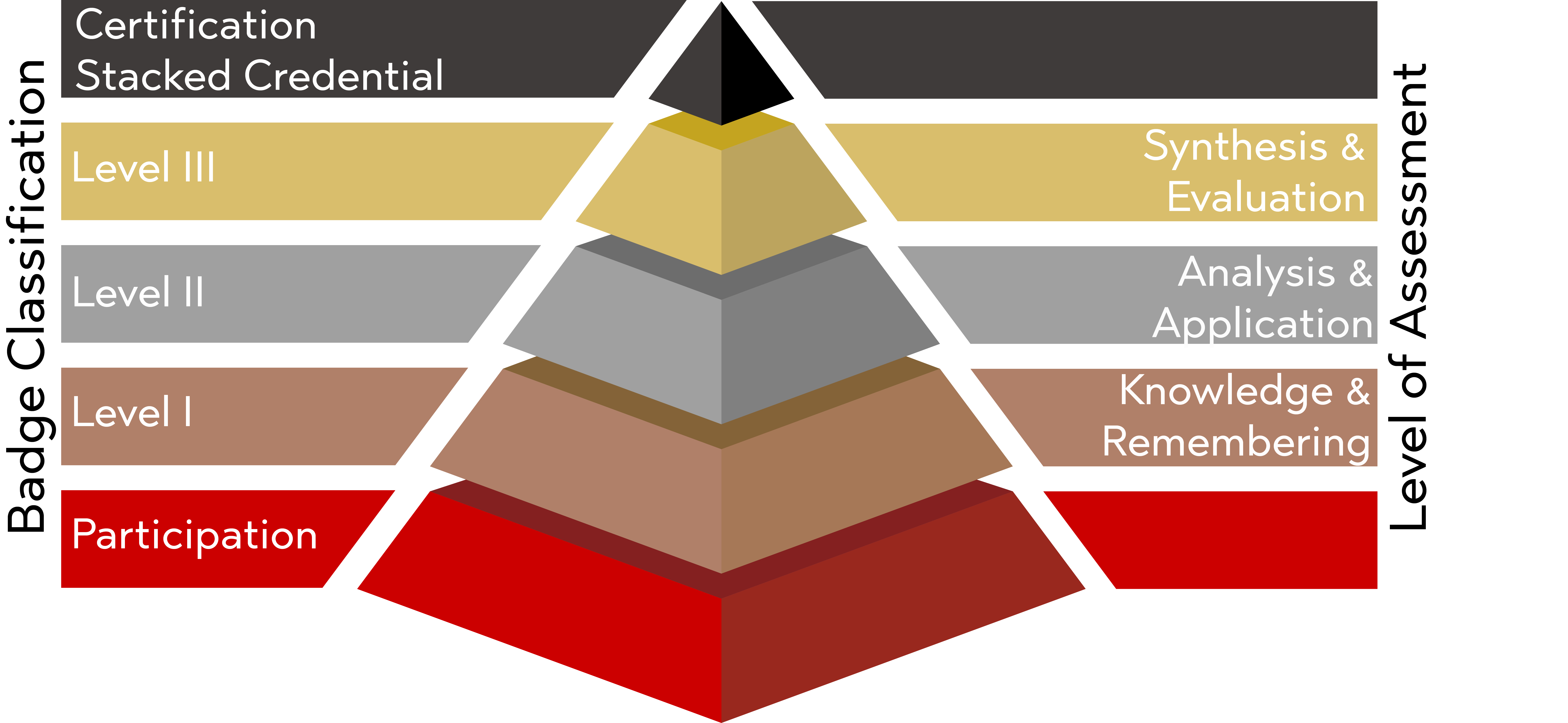Texas Tech University Health Sciences Center Microcredentials and Digital Badging
A Guide to TTUHSC Microcredentials
Microcredentials play a pivotal role in facilitating lifelong learning by offering individuals a flexible and targeted approach to acquiring new skills and knowledge. As the professional landscape continues to evolve, Microcredentials provide a means for individuals to continually upskill or reskill in response to changing industry demands without the time commitment of a full degree program. This enables professionals to stay abreast of the latest developments in their field, pursue new career opportunities, and adapt to emerging trends, ultimately supporting their ongoing professional growth and contributing to a culture of lifelong learning.
The integration of Microcredentials at TTUHSC is aimed at elevating the visibility and marketability of TTUHSC learners, highlighting their knowledge and skill sets. Concurrently, this initiative seeks to foster increased engagement in campus initiatives and career advancement among learners, faculty, staff, alumni, clinicians, preceptors, and university community partners.
What are Microcredentials? Microcredentials are a powerful way to validate skills and showcase expertise in
a focused area of learning. These credentials represent structured learning experiences
that incorporate both formative and summative assessments, ensuring alignment with
industry and post-graduate needs.
What are Digital Badges? Digital badges are dynamic, portable representations of microcredentials that serve
as verifiable proof of your skills and accomplishments. They can be proudly displayed
on resumes, social media profiles, and professional websites, helping learners stand
out in competitive job markets.

To earn a TTUHSC microcredential, follow these simple steps:
- Explore Microcredential Offerings: Browse the available microcredentials on Accredible.
- Enroll in a Program: Enroll in the selected microcredential program, which may involve online courses, workshops, or other learning activities. Each badge will detail the process to enroll, as well as contact information for the badge sponsor, based on available badges and badge/enrollment criteria.
- Complete Coursework: Successfully complete the required coursework and assignments.
- Undergo Assessment: Participate in assessments, such as quizzes, exams, or projects, to demonstrate your learning.
- Earn Your Badge: Upon successful completion of all requirements, you will be awarded a digital badge recognizing your achievement.
For a full list of currently available Microcredentials or digital badges, visit our Microcredential website provider:
TTUHSC offers a variety of high-quality Microcredentials designed to meet the evolving needs of healthcare professionals, students, and faculty/staff. By earning a TTUHSC Microcredential, you can:
- Enhance your career prospects: Demonstrate your expertise and stand out in a competitive job market.
- Advance your professional development: Acquire new skills and knowledge to stay current in your field.
- Earn recognition for your achievements: Showcase your accomplishments with a visually appealing digital badge.
- Support workforce development: Develop a skilled workforce by providing competency-based instruction and recognition.
Microcredentials are taught by specific programs within TTUHSC. The Microcredentials are tailored to be taught online and in the classroom.
For a full list of currently available Microcredentials or digital badges, visit our Microcredential website provider:
TTUHSC microcredentials are awarded at different levels, each representing increasing levels of complexity and mastery. These levels are based on Bloom's Taxonomy and Moore's Expanded Outcomes Framework.
- Red (Foundational Knowledge and Skills): Basic knowledge and skills required to enter a field or role.
- Bronze (Application of Knowledge and Skills): Ability to apply knowledge and skills to practical situations.
- Silver (Analysis and Critical Thinking): Ability to analyze information, identify patterns, and draw conclusions.
- Gold (Synthesis and Creation): Ability to synthesize information from multiple sources and create new ideas or solutions.
- Black (Evaluation and Expert Practice): Ability to evaluate information, make judgments, and solve complex problems.
By understanding these badge levels and the taxonomy, you can better appreciate the value and rigor of TTUHSC microcredentials.

Application Process:
To propose a new microcredential, please follow these steps:
- Review the Badge Style Guide: Carefully review the Badge Style Guide to understand the different badge levels, associated learning outcomes, and visual design elements. This will help you align your proposed microcredential with TTUHSC's standards.
- Complete the Application Form: Fill out the online application form, providing detailed information about your proposed
microcredential, including:
- Title: A clear and concise title that accurately reflects the content and learning outcomes.
- Description: A detailed description of the microcredential, including its purpose, target audience, and learning objectives.
- Learning Outcomes: Clearly defined learning outcomes that align with the Badge Style Guide's taxonomy and framework.
- Assessment Methods: A description of the assessment methods that will be used to evaluate learner performance.
- Badge Level: The proposed badge level based on the complexity of the learning outcomes and assessment methods.
- Supporting Documentation: Any relevant supporting documents, such as curriculum materials, syllabi, or sample assessments.
- Letter of Support: All badges should have a signed letter of support from department chairs/deans/senior leadership as determined by each school or organization.
Faculty, Staff, and Organizations within TTUHSC can offer badges to help learners engage with their programs to help learners earn distinctions, professional development, and highlight specific skills and competencies. The first step is to read the Microcredential and Digital Badging Style Guide.
Once you have reviewed the Microcredential and Digital Badging Style Guide, staff can log into and apply to offer a new Microcredential by filling out the application HERE
Once you submit your application, the Microcredentialing and Digital Badging team will review it based on the following criteria:
| Criteria | Excellent | Good | Fair | Poor |
|---|---|---|---|---|
| Alignment with TTUHSC's Mission and Vision | Clearly aligns with TTUHSC's strategic goals and priorities. | Aligns with TTUHSC's goals but could be more specific. | Limited alignment with TTUHSC's goals. | Does not align with TTUHSC's goals. |
| Clarity of Learning Outcomes | Clearly defined, measurable, and achievable learning outcomes. | Learning outcomes are clear but could be more specific or measurable. | Learning outcomes are vague or unclear. | No clear learning outcomes provided. |
| Relevance and Impact | Addresses a clear and significant need for learners and the institution. | Addresses a relevant need but could have a greater impact. | Limited relevance and potential impact. | Not relevant or impactful. |
| Assessment Methods | Rigorous and appropriate assessment methods aligned with learning outcomes. | Assessment methods are adequate but could be more rigorous. | Assessment methods are weak or inappropriate. | No assessment methods provided. |
| Feasibility and Sustainability | Realistic and feasible plan for implementation and ongoing support. | Plan is feasible but could be more detailed or sustainable. | Limited feasibility and sustainability. | Not feasible or sustainable. |
| Badge Level Appropriateness | Appropriate badge level is selected based on the complexity of the learning outcomes and assessment methods. | Badge level is generally appropriate but could be reconsidered. | Incorrect badge level is selected. | No badge level is proposed. |
The team will provide feedback on your application and may request revisions or additional information. Once approved, your microcredential will be added to the TTUHSC Microcredentials platform.
Earning a TTUHSC microcredential offers numerous benefits, including:
- Career Advancement:
- Enhanced Job Prospects: Demonstrate your expertise and stand out in a competitive job market.
- Increased Earning Potential: Advance your career and qualify for higher-paying positions.
- Career Mobility: Gain the skills and knowledge needed to transition to new roles or industries.
- Professional Development:
- Lifelong Learning: Continuously develop your skills and knowledge.
- Skill Upgrading: Acquire new skills to stay current in your field.
- Personal Growth: Expand your knowledge base and develop new perspectives.
- Professional Recognition:
- Digital Badge: Showcase your achievements with a visually appealing digital badge.
- Portfolio Building: Add microcredentials to your professional portfolio to highlight your skills and experiences.
- Industry Validation: Gain recognition from employers and peers for your expertise.
By investing in a TTUHSC microcredential, you are investing in your future.
Faculty, Staff, and Organizations within TTUHSC can offer badges to help learners engage with their programs to help learners earn distinctions, professional development, and highlight specific skills and competencies. The first step is to read the Microcredential and Digital Badging Style Guide.
Once you have reviewed the Microcredential and Digital Badging Style Guide, staff can log into and apply to offer a new Microcredential by filling out the application HERE
Contact Us
Reach out with questions to: microcredentials@ttuhsc.edu or our FAQ's page.
To see the Operating Policy and Procedure that governs this program: Click here

